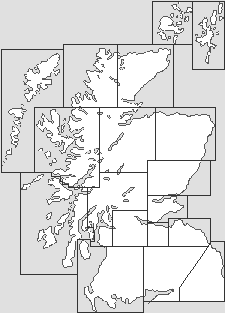 Unusually Large Midge near Acharacle |
Summer visitors to Scotland need to be aware of a fact of life that is usually not headline material in tourist literature: midges. Midges are tiny swarming insects that occur across large portions of the globe. However, the particular sub-species of the midge that is found in Scotland is known as the Highland Midge, or "Culicoides Impunctatus": and it has a reputation for being more ferocious than most.
Midges occur more in the north and west of Scotland than in the south or the east. They especially like wet and uncultivated land, something that parts of Scotland have in super-abundance.
It is the female midge that bites. It can only lay its eggs after it has had a blood meal; which is where you and I come in. Midges start to become a problem in June and usually last through to August when their numbers diminish rapidly, before they finally disappear with the first real frost of autumn. The numbers of midges vary considerably from year to year, depending on the severity of the preceding winter, the amount of spring rainfall, and the temperature.
To avoid midges, it helps to know a little about their likes and dislikes. They like the cool indirect light of dawn and dusk, and dislike direct strong sunlight. They like damp conditions and dislike dry conditions. And they like still air and dislike anything above a fairly gentle breeze. All this tends to mean that midges are less common the middle of the day than in the mornings and evenings; that they are rarer on exposed hills than in sheltered valleys; and that the can be fond of woodland and forest areas. Finally, it is worth knowing that midges prefer dark coloured clothing to light.
It also helps to have an insect-repellant available. Most common are a range of different brands containing varying concentrations of a chemical called DEET (di-ethyl toluamide). Another chemical commonly used is DMP (dimethyl phthalate). A more recent arrival on the scene has been a product called "Smidge", which uses Saltidin as its active ingredient and seems very effective. Other alternatives are available using citronella and eucalyptus oils. Some also swear by the midge-repellant effects of Avon's Skin So Soft Body Oil. And you will also find netting midge hoods on sale in many outlets across the Highlands and Islands.
It is worth keeping midges in perspective. They've been a part of life in the Highlands for centuries, and are only likely to depart if the climate changes so much that the country itself becomes a radically different place. And it's the country you come to the Highlands to see. Also bear in mind that the midges serve a useful purpose in controlling the role and impact of man in Scotland. Without them Scotland would be a different and a lesser place...
